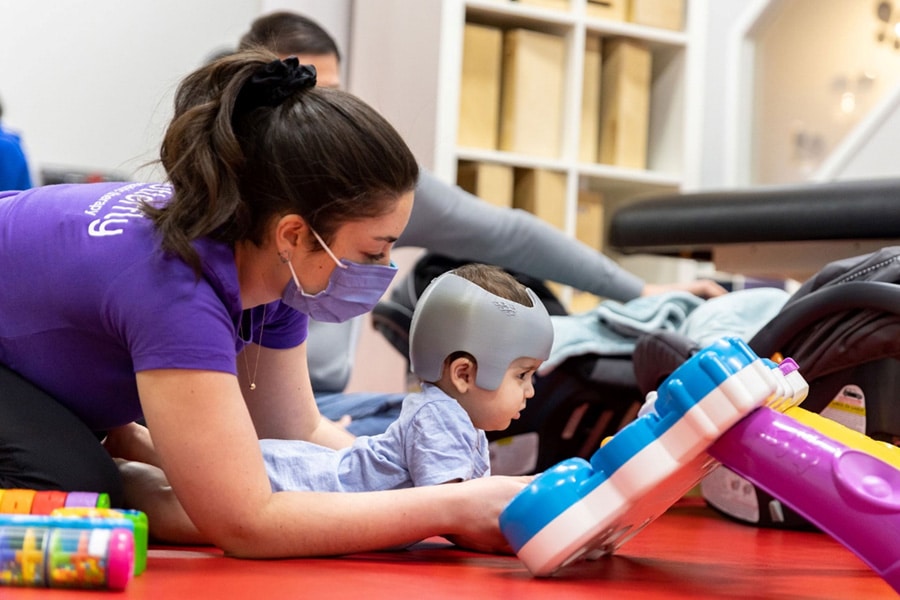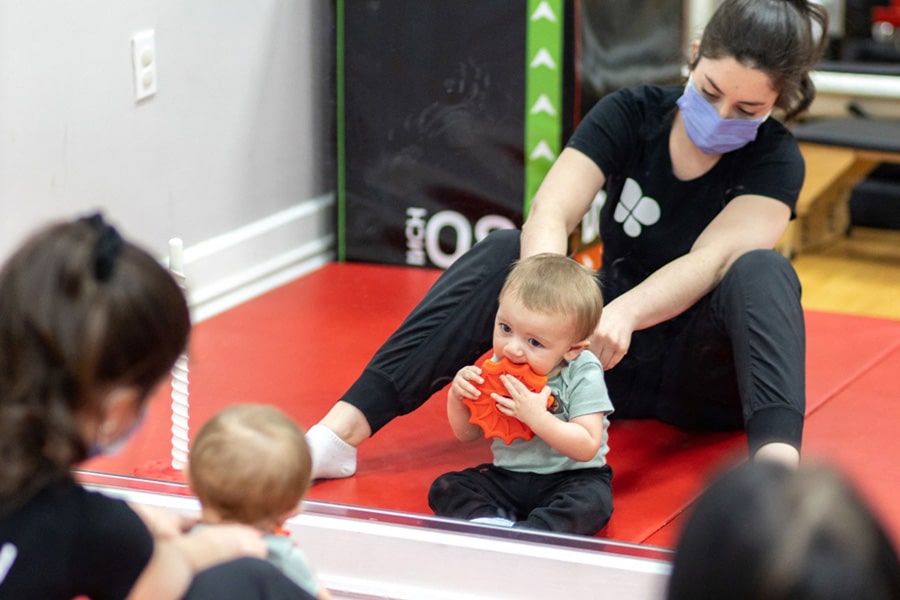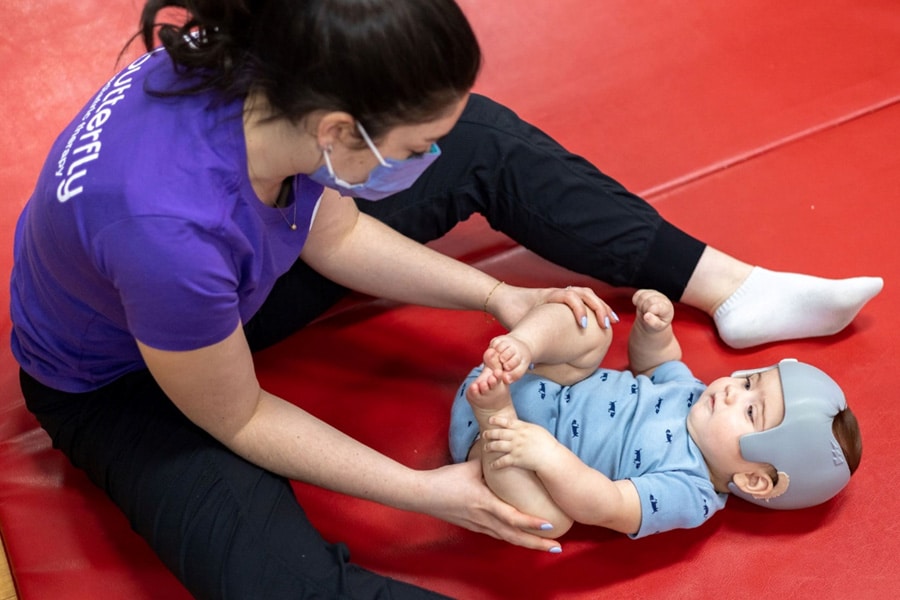Torticollis and Plagiocephaly
Have you noticed your child has a preference to look to one side more than the other? Is their head tilted to one side? These may be symptoms of infantile torticollis, which is a muscular condition involving damage or shortening of the neck muscles which may have been caused in utero or post birth.
At Butterfly, your physiotherapist will perform a comprehensive assessment of your child’s head and neck alignment, whole body positioning, neck range of motion and head control. Based on assessment findings, your physiotherapist will then develop an individualized treatment plan involving positioning techniques, carrying techniques, stretching and strengthening exercises to aid in resolving your child’s torticollis.



Sometimes, when a child has a preference to look to one side more than the other, they may develop a flat spot on the side of their head, known as plagiocephaly. This flat spot typically occurs due to positional preferences, causing prolonged time spent with pressure on one side of the skull, and therefore results in observable flattening. It is very common for a child to present with both torticollis and plagiocephaly concurrently.
Not to worry! During the assessment, your physiotherapist will also observe your child’s positional preferences, skull shape, ear alignment and facial symmetry to check for plagiocephaly. Should a flat spot be present, your physiotherapist will educate you on positioning techniques to aid in promoting symmetrical skull growth.
Why Butterfly?
We understand that knowing your child may present with torticollis or plagiocephaly can be distressing to you as a parent. Our physiotherapists are trained in infant conditions and have taken further continuing education related to torticollis and plagiocephaly. We strive to provide you with the support and education you need to answer your questions, allow you to take an active role in your child’s recovery, and be confident that your child is in good hands. We look at the child and family as a whole, and combine education and treatment about the specific neck or head issue with important early intervention to ensure gross motor milestones are not being compromised.
